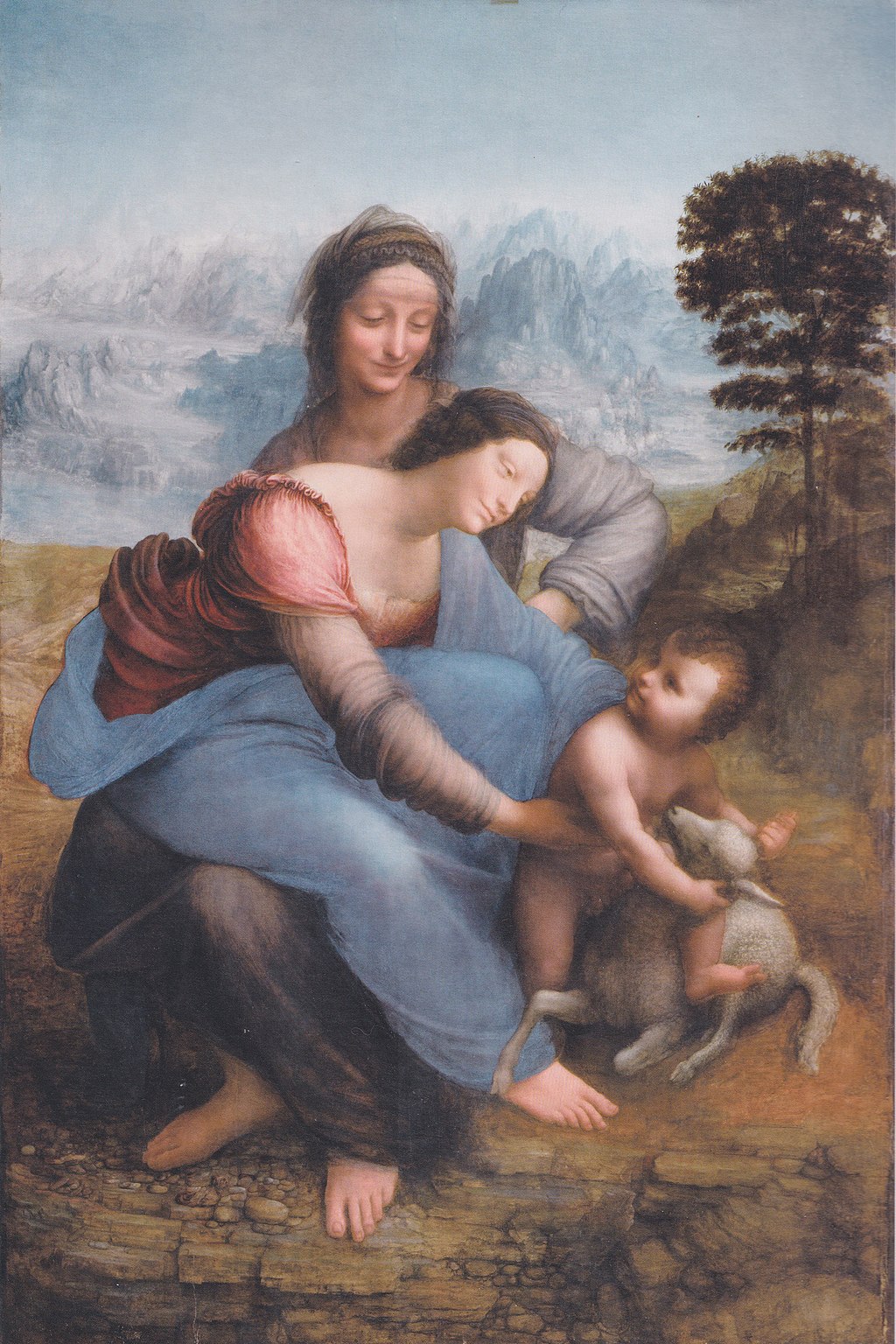Aerial Perspective
The haze that characterizes distant objects is called Aerial Perspective or Atmospheric Perspective. Leonardo noted that, as well as appearing smaller, objects are less distinct or detailed as they recede. He called it Perspective of Disappearance. This technique can be used in black and white as with Jacques Callot's drawing below. But also colours appear more muted in the distance. Cornelius Krieghoff's highly detailed and lively narrative foreground contrasts sharply with a hazy, somber, amorphous background. The effect is also referred to as sfumato, and it was (and is) a device widely used by artists worldwide.
Leonardo da Vinci; Madonna and Saint Anne, Paris, Louvre
https://en.wikipedia.org/wiki/The_Virgin_and_Child_with_Saint_Anne_%28Leonardo%29
Jacques Callot, The Two Pantaloons, 1616, The British Museum
https://www.britishmuseum.org/collection/term/BIOG21725
Cornelius Krieghoff. Breaking Up of a Country Ball in Canada, Early Morning, 1857. The Thomson Collection,
the Art Gallery of Ontario. https://ago.ca/agoinsider/closer-look-krieghoff-edition
Wang Meng, 1308-1385, Mount Taibai
https://www.comuseum.com/painting/masters/wang-meng/
A photograph can readily illustrate that this phenomenon actually happens. The dock in the foreground here is rendered in great detail while the background is quite indistinct. This might be a good time to point out that many forms of Perspective can comfortably co-exist in the same rendering. The parallel rails of the dock appear to converge on one point, the more distant sailboats and lamp posts appear smaller, the fence posts overlap as they recede, and the ground plane rises for each plank in the deck as our eye is lead into the sfumato of the distance.
Rocky Point Pier, Port Moody
Leonardo's description of the Perspective of Disappearance seems to refer principally to very distant landscape backgrounds, but it can be used for more intimate surroundings. Our visual acuity is not consistent across our field of vision. Objects in the centre of our gaze are more sharply focussed, while objects at the periphery are fuzzier. Rembrandt very successfully imitated this phenomenon in many of his paintings to create a spacial relationship, and to focus our attention on the main subject. And it very well suited the Impressionist style, as Renoir demonstrates..
Rembrandt van Rijn; Return of the Prodigal Son, 1667, St. Petersburg, The Hermitage Museum
https://www.hermitagemuseum.org/wps/portal/hermitage/digital-collection/01.%20paintings/43413
Pierre-Auguste Renoir; Dance at Bougival, 1883, Boston, Museum of Fine Art.
https://collections.mfa.org/objects/32592/dance-at-bougival?ctx=3f209fdd-e1e7-42d9-8d63-eaf276824729&idx=11






